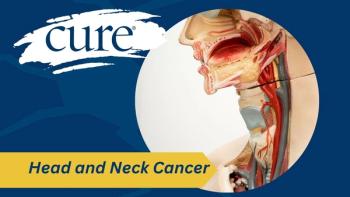
Immune-Based Therapies Emerge in Mantle Cell Lymphoma
Patients with the aggressive blood cancer can turn to immunotherapies like CAR-T cell therapy when disease recurs or becomes resistant.
Patients with mantle cell lymphoma are often treated with intensive therapy upfront, including autologous stem cell transplant. However, if relapse or treatment resistance occurs, options become more limited.
Immunotherapies, such as chimeric antigen receptor (CAR)-T cell therapy, are advancing the therapy landscape for these patients.
“CAR-T cell therapy has shown significant benefits in this patient population,” Dr. Charalambos (Babis) Andreadis, said in an interview with OncLive®, a sister publication of CURE®. “In patients with relapsed/refractory MCL, both lisocabtagene maraleucel (JCAR017) and axicabtagene ciloleucel (Yescarta) have shown 70% to 90% response rates and 50% to 60% (complete response) rates. That is going to be the future of this field.”
Mantle cell lymphoma is an aggressive, rare form of non-Hodgkin lymphoma (NHL) that accounts for about 6% of all NHL cases in the United States. The disease results from a malignant transformation of a B lymphocyte in the outer edge of a lymph node follicle, or the mantle zone, according to
“Mantle cell lymphoma is a disease that responds well to initial therapy, so we try to throw (everything we have) at it (early),” Andreadis, an associate professor of clinical medicine in the Department of Medicine at the University of California, San Francisco, Helen Diller Family Comprehensive Cancer Center, said. “When a patient relapses, ibrutinib (Imbruvica) or a BTK-like agent is the drug of choice.”
Types of BTK inhibitors include Imbruvica, Calquence (acalabrutinib) and Brukinsa (zanubrutinib). The responses seen with these drugs have led to approvals from the Food and Drug Administration for patients who have received at least one prior line of therapy. But often patients will relapse following BTK inhibitor therapy. The median duration of response is about 1 to 1.5 years, Andreadis explained.
As another approach to treatment, researchers are examining the effects of CAR-T cell therapy. During the 2019 American Society of Hematology annual meeting, results from the ZUMA-2 clinical trial showed promise in the investigational CAR-T cell therapy KTE-X19. The phase 3 trial included patients with relapsed and/or refractory mantle cell lymphoma who had received multiple prior lines of therapy. Patients received a single infusion of KTE-X19, and the researchers saw a 93% objective response rate and a 67% complete response rate.
“Right now, we are asking, ‘In what patient population can we use CAR-T cell therapy in?’ Andreadis said. “Can we give it to patients with central nervous system disease? What about other lymphomas like follicular lymphoma? Can we give it in the clinic? We are getting the data that may increase the applicability of CAR-T cell therapy in those areas.”
Although there is much hope in the use of CAR-T cell therapy, not all patients respond, or treatment may stop working. That’s where experts are exploring antibody-drug conjugates and bispecific T-cell engagers (BiTEs). “We saw response rates of 50% to 70% in patients treated with bispecific antibodies, some whom failed CAR T prior,” he said.
He added, “Going forward, we need to get CAR T more affordable and accessible. We also need to work to simplifying the procedure, perhaps by using allogeneic CAR T cells.”





